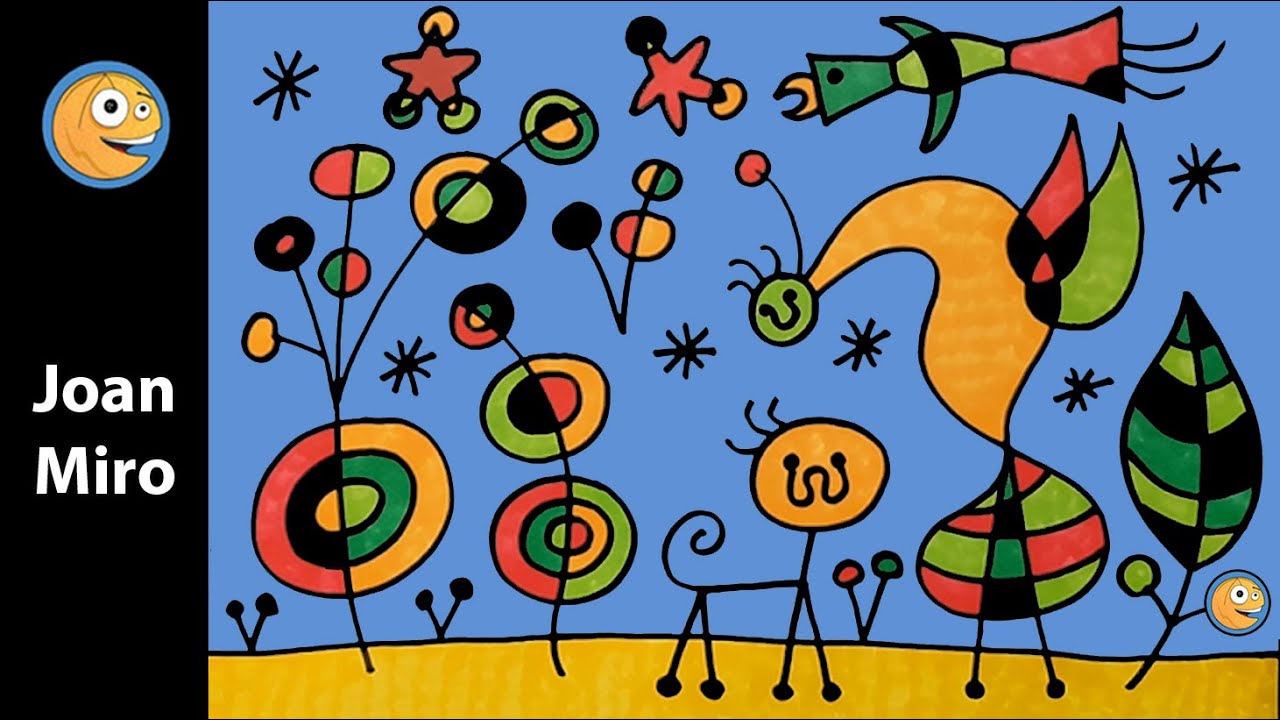Who is Joan Miró with his life and unknowns?
When Joan Miró is mentioned, women, birds, stars, moon and sun come to mind. Painter Joan Miró (20 April 1893 – 25 December 1983) is one of the symbols of Spain with its vibrant colors and cheerful patterns.

Joan Miró Ferra was born on April 20, 1893 in Barcelona to a family of artisans engaged in carpentry and jewellery. Interested in art from an early age, Miró leaves trade school and goes to Escola de la Llotja (Llotja Academy of Fine Arts). However, at the request of his family, he quit his art education at the age of 17 and started working as a civil servant.
This decision adversely affects Miró's health, he has a nervous breakdown, and he begins to live on their farm in Mont-roig. Realizing his son's unhappiness, his father is forced to consent to become an artist. In 1912 he attended Francesc d'Assís Galí's art school in Barcelona and decided to devote his life entirely to painting. In this period, Miró's works, which began to be influenced by masters such as Cezanne, Picasso, Van Gogh and Matisse, are characterized as magic realistic style. He opened his first solo exhibition in Barcelona in 1918, but was ridiculed by critics and the public.
He goes to Paris in 1920 and is greeted by Picasso. Their friendship is based on their mother's friendship. They are two Spanish painters who are very different in personality. Unlike Picasso, Miró leads an orderly, planned life and is a good family man. He married his wife Pilar Juncosa (1904 – 1995) in Palma in 1929, for 54 years. When they meet years later, Picasso asks, "Are you still with the same woman all these years?"
With Max Jacob, Pierre Reverdy and Tristan Tzara, whom he met in Paris, he joins the Dada movement, a cultural and artistic protest against the brutality, intellectual rigidity and sexual exploitation in everyday life and artistic activities that arose during World War I. Later, due to his interest in poetry, he decided to join the surrealist movement developed under the leadership of the poets. When André Breton published the Surrealist Manifesto in 1924, he was among the first to join the movement, along with Andre Masson, Max Ernst, Louis Aragon, and Paul Eluard. Described by André Breton as the most surrealist among us, Joan Miró presents a fantastic world to the audience with his childlike and witty paintings in which vivid colors, biomorphic creatures, arabesques, women, birds, sun and stars are interspersed in celestial space. He opened his first exhibition in Paris in 1925 at Galerie Pierre.
Miró and his family return to Paris in 1936 when the Spanish Civil War breaks out. He has many works that evoke the Spanish Civil War between 1932 and 1935, which can make you feel the pre-war atmosphere and the tension created by the war.
Shaping his paintings with spots and free brush strokes in pure primary colors, Miró thus achieved a simpler style, mainly focused on the subject and used symbols and signs in this context. Deformed notes and half moons, fish, simply drawn stars, people, eyes, geometric shapes dominated by circles and triangles are among the shapes we often come across in Miró's works.
When the Second World War broke out in 1939, while the German forces were advancing in Paris on May 20, they miraculously managed to escape to Spain with the last train with their family.
One of Miró's sources of inspiration is children's paintings. According to him, the best way to understand the subconscious mind is to examine what the child's mind produces. The stars, dots and lines in his paintings almost invite a world of dreams. While other surrealist paintings are sometimes creepy and sometimes dark, Joan Miró's paintings radiate joy and innocence, just as in the sky blue gold painting.
As with other surrealist artists, Miró also sees a painting universe where all the rules and laws, including gravity, are not valid, without concern for the ground. Using pure/saturated tones of blue, yellow and green, especially red and black, the artist builds the complex process that creates meaning in his works, actually on plain contrasts. He conveyed his artistic creation with the system of signs he created through simple shapes by codifying the general process, made it a component part of the process, and revealed with his works that art, which has a communicative function, is not only aesthetic but also an indicator.
As Miró's recent works begin to become more abstract and grow in size, the use of vibrant colors becomes more evident. After his visit to Japan in 1966, new techniques, which started to reflect the effects of this culture, and his works in which symbols, letters and signs began to stand out more began to stand out. His works such as L'or de l'azur and the Poème series reflect all the characteristics of the period very well.
A series of student protests against capitalism, consumerism and traditional institutions in France in May 1968 is seen as a cultural, social and moral turning point in the country's history. Sympathetic to the movement, Miró was influenced by this event and created his work, May 1968.
Founded in Barcelona in 1975 when Miró was still alive and defined by the artist as an art center rather than a museum, Fundació Joan Miró exhibits nearly 13,000 works, 225 of which are oil paintings and 169 are sculptures. He died on December 25, 1983 in Palma de Mallorca, Spain.
